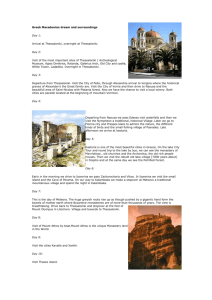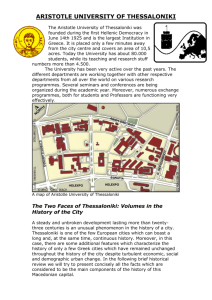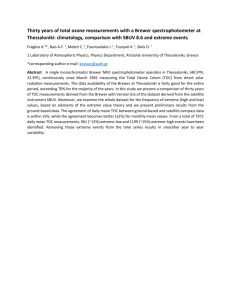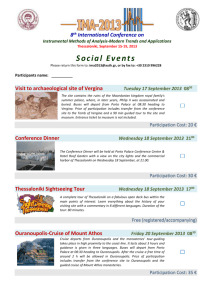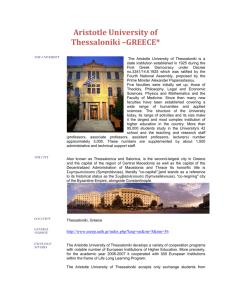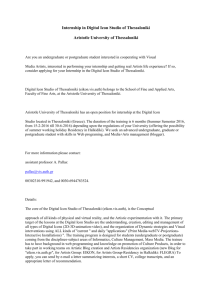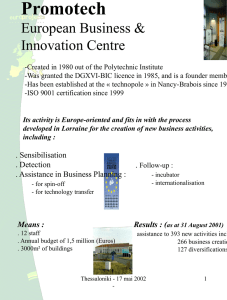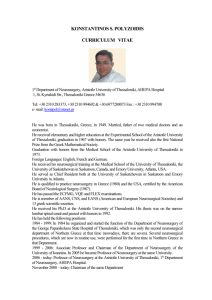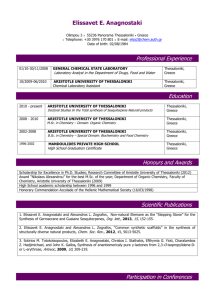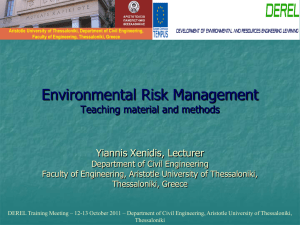MARKAL
advertisement
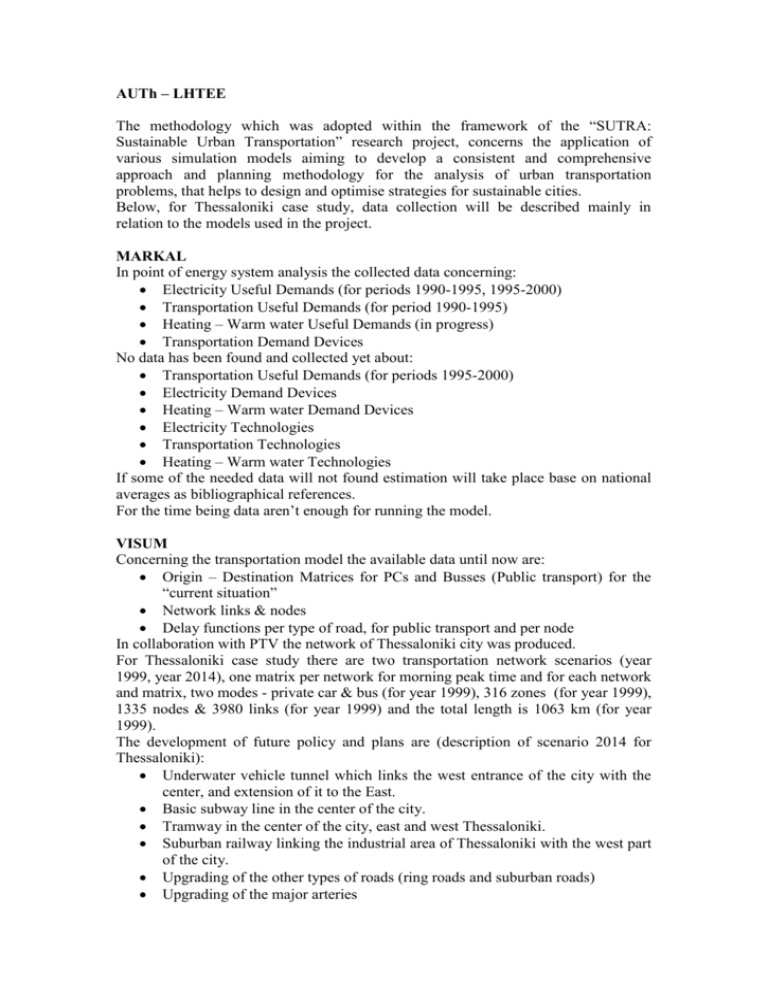
AUTh – LHTEE The methodology which was adopted within the framework of the “SUTRA: Sustainable Urban Transportation” research project, concerns the application of various simulation models aiming to develop a consistent and comprehensive approach and planning methodology for the analysis of urban transportation problems, that helps to design and optimise strategies for sustainable cities. Below, for Thessaloniki case study, data collection will be described mainly in relation to the models used in the project. MARKAL In point of energy system analysis the collected data concerning: Electricity Useful Demands (for periods 1990-1995, 1995-2000) Transportation Useful Demands (for period 1990-1995) Heating – Warm water Useful Demands (in progress) Transportation Demand Devices No data has been found and collected yet about: Transportation Useful Demands (for periods 1995-2000) Electricity Demand Devices Heating – Warm water Demand Devices Electricity Technologies Transportation Technologies Heating – Warm water Technologies If some of the needed data will not found estimation will take place base on national averages as bibliographical references. For the time being data aren’t enough for running the model. VISUM Concerning the transportation model the available data until now are: Origin – Destination Matrices for PCs and Busses (Public transport) for the “current situation” Network links & nodes Delay functions per type of road, for public transport and per node In collaboration with PTV the network of Thessaloniki city was produced. For Thessaloniki case study there are two transportation network scenarios (year 1999, year 2014), one matrix per network for morning peak time and for each network and matrix, two modes - private car & bus (for year 1999), 316 zones (for year 1999), 1335 nodes & 3980 links (for year 1999) and the total length is 1063 km (for year 1999). The development of future policy and plans are (description of scenario 2014 for Thessaloniki): Underwater vehicle tunnel which links the west entrance of the city with the center, and extension of it to the East. Basic subway line in the center of the city. Tramway in the center of the city, east and west Thessaloniki. Suburban railway linking the industrial area of Thessaloniki with the west part of the city. Upgrading of the other types of roads (ring roads and suburban roads) Upgrading of the major arteries Because of compatibility problems with the software of VISUM until the end of November there is no results for Thessaloniki case study. VADIS and emission model All required input data were collected and sent to UAV. Data consist of: Number of vehicles, average speed, road length, fleet composition Emission data (hourly) for every road Meteorological data Coordinates of emissions sources Data with regard to the geometry of obstacles and Hourly concentrations of NO2, CO and NO from a station located at the town hall Until the MTA no results have been received. Indicators and Scenario data Concerning indicators data that have been collected are: 1. Driving forces Demographic data and trends Land use data Economic data including employment 2. Response Investment Transportation modes data, occupancy etc. Public transport prices and market penetration of private cars Also population and Housing Characteristics. The available list of scenario includes Demographic Data (Population growth and Ageing structure) and Technological Data (Occupancy rate per passenger car and fleet composition). The Economic Data aren’t available. Traffic accidents data The traffic accidents data consisted of: Population transportation/day by mode, possession data (vehicles per household and 1000 inhabitants), number of traffic accidents and injured persons table. City specific data and information For the Greater Thessaloniki region maps and GIS data have been sent including height contour map, municipality border map and the road network map as .jpg files and land use, height contour, road network information for the same region in ARC/INFO format. The institutional framework and the list of contact persons were sent. Also the city description has been prepared and it is located in: http://www.ess.co.at/SUTRA/CITIES/thessaloniki.html OFIS The input data needed to run the OFIS model are: Latitude and longitude Time zone meridian Distance and angle of sea from city center Number of neighboring cities Distance of neighboring cities from city center and their angle from North (with city as reference) Meteorological data (wind speed, wind direction temperature and temperature gradient) for each day of the considered time-period Diurnal average background boundary concentrations of 66 species participating in the ozone cycle, for each day of the considered time-period Emission data with hourly emissions of 15 species (for ground and elevated level) for only one representative day, for the urban, suburban and rural area around the city, as well as for each neighboring city Landuse according to certain 10 types of land Wind speed and wind direction during the sea-breeze days of the considered timeperiod, as well as their specific dates For Thessaloniki all these data are available, thus hourly ozone concentrations were produced for every day of the considered time-period. Specifically the model has been applied for 6 months (1/4/95-30/9/95) and IND120 values with wind rose of prevailing wind is presented. IND120 is the number of days with maximum 8hour running average ozone concentration exceeding 120μgr/m3, for each of the cells (1km1km) of the examined domain (150150km2), during the whole of the specified period. IND120 60 40 125 105 20 85 0 65 -20 45 25 -40 0 -60 -60 -40 -20 0 20 40 60 In the case of Thessaloniki, exceedances are observed, as in the Genoa case, away from the city influence and due to high ozone background concentrations exceeding in some days the target value of 120μg/m3. NO emissions limit ozone production in the urban area as expected, but low VOC emissions prohibit ozone formation downwind, similarly to the Gdansk case. Although detailed and comprehensive emission data were available for this case, the lumping of VOC from the original speciation to the one used by the model was inadequate. NE of the city, the sea breeze effect is evident, as SW winds, occurring in 40% of the studied summer days, advect poor in ozone air from the city.

